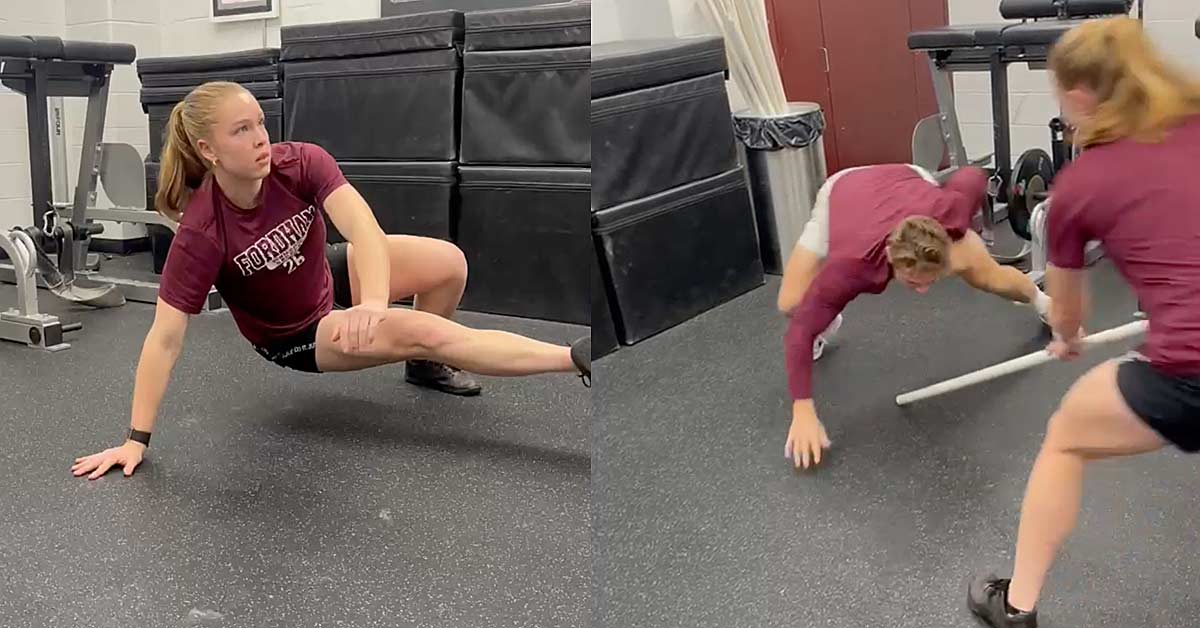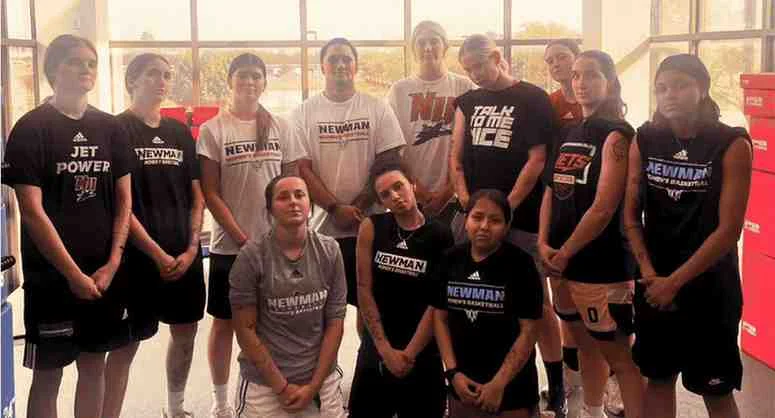When it comes to warming up, it is easy to get trapped in the monotony of following similar protocols for far too long. Typically, warm-ups include foam rolling, static stretching, dynamic stretching, activation, or a combination of these elements. We can all agree that hammering the basics is extremely important, and mastery is the result of 10,000 or so reps; however, variety can also be very beneficial at specific times.
For athletes, this time can come at various phases throughout the year. For the general population, this can be whenever your warm-ups or workouts feel stale. I typically implement warm-ups with more movement variety during the post-season or pre-season periods and warm-ups with more work capacity during the off-season. This article will cover three different warm-up protocols and numerous ideas to implement to enhance the start of your sessions.
Three Steps to Creating a Quality Warm-Up
The first step in any good warm-up is goal setting. What exactly are you trying to accomplish during your training? It would be wise to figure out your end goal and then work back from there.
The first step in any good warm-up is goal setting. What exactly are you trying to accomplish during your training? Your end goal should be based on the type of training. Share on XYour end goal should be based on the type of training—a strength training warm-up may look completely different than a Brazilian jiu-jitsu warm-up, for example. The goals that I look to accomplish within a warm-up period include heart rate elevation, muscle activation, skill development, and, potentially, flexibility. (I say “potentially” because the nature of these exercises may or may not lead to an increase in flexibility.)
The next step is structure. A solid warm-up should be organized and sound. One way is to follow the R7 system, developed by Mike Robertson and Bill Hartman, which provides an effective step-by-step approach for an optimal order of exercises. The first three steps in this system include:
- Release (soft tissue work).
- Reset (improving body and joint positioning).
- Readiness (heart rate elevation and preparing the body for the session to come).
Checking off all of these boxes will not always be possible, but aiming to do so will leave you with a solid foundation. There should also be structure in terms of flow, something that is modeled by Mike Boyle and MBSC. A great warm-up flow includes starting with drills where you are supine, then prone, followed by kneeling or half-kneeling, and, finally, drills where you are standing. Try to avoid making your athletes, or yourself, stand up and down multiple times throughout a warm-up. Enhance your structure by making one drill flow into the next whenever possible!
The final step is perfection, or the pursuit thereof. Coach Alan Bishop once tweeted, “The warm up is the workout.” Therefore, you should strive to get better at each drill. Much like a complex exercise, you can measure progress based on getting better at a warm-up protocol.
Try to avoid making your athletes, or yourself, stand up and down multiple times throughout a warm-up. Enhance your structure by making one drill flow into the next whenever possible. Share on XMany coaches will even use warm-ups to assess any lack of flexibility, coordination, etc., during certain drills. The warm-up can be a great time to develop foundational skills; you should not take it lightly. With this being said, you should run it with intent. Don’t be afraid to run warm-ups numerous times until they are done with the highest standard and execution possible.
Three Warm-Up Protocols
The protocols listed below have been implemented, tested, and refined with great results! Our athletes and I have found them to be just as fun as they are productive. Those who got better at these protocols saw great improvements in movement quality, motor control, and leadership!
1. 2 Tuff 2 Tap
The first warm-up protocol is called 2 Tuff 2 Tap. This series of exercises fits best into the Animal Flow bucket. “Animal Flow” comprises various yoga, gymnastics, and animal-like movements that are ground-based and done with only body weight. This specific list is based on martial arts drills from the Animals MMA gym in Yonkers, NY. The warm-up is as follows:
- Egg roll x 10
- Roll back to hamstring x 10
- Full forward/back roll x 5 (if on a supportive surface)
- Glute bridge with reach x 10e
- Segmented roll x 1e
- Sit through x 10e
- Down dog to cobra x 10
- Technical stand-up x 5e
- Full get-up x5
Video 1. 2 Tuff 2 Tap warm-up.
This warm-up will check off each criterion listed above (heart rate elevation, etc.) and can significantly increase playfulness in your warm-ups! You can really implement it at any time. Early off-season would be a good place to start, given the extremely general and unspecific nature of each drill; however, utilizing these drills close to the season can be beneficial to prepare the tissues for just about anything.
You can also use this warm-up for athletes or teams that need to improve their proprioception and motor control. Your athletes will find these drills extremely challenging at first but will slowly improve over the semester.
2. Discipline Equals Freedom
The second warm-up protocol is called “Discipline Equals Freedom.” This warm-up, inspired by Jocko Willink’s book, is a circuit-style warm-up utilizing only body weight. The warm-up is as follows:
Round 1
- 1 push-up
- 1 full squat
- 1 burpee (4 count)
- 5 jumping jacks
Round 2
- 2 push-ups
- 2 full squats
- 2 burpees (4 count)
- 10 jumping jacks
Round 3
- 3 push-ups
- 3 full squats
- 3 burpees (4 count)
- 15 jumping jacks
Continue for five rounds (5 reps of all exercises and 25 jumping jacks).
Video 2. Discipline Equals Freedom warm-up (first round only shown).
This warm-up is a GREAT way to develop work capacity if done at a high pace. Ensure full range of motion and perfect technique with each movement. This is also a technique to develop leadership and culture throughout the year. Pick a different athlete to lead each drill and have the entire team count on cadence!
3. Bodyweight Buy-In
The third protocol is a “Bodyweight Buy-In.” Much like you need to buy yourself into a poker table in Vegas, you can also buy yourself into a weight room (you can also buy yourself out!). Your athletes cannot begin their first exercise(s) until they finish their buy-in. The warm-up is as follows:
Accumulate in as few sets as possible with great technique. Break these up as much as needed:
- 50 push-ups
- 10 pistol squats each side
- 30 chin-ups
Video 3. Bodyweight Buy-In. The Bodyweight Buy-In warm-up is elite with regard to skill development, specifically with long-levered athletes who need more relative strength. Share on X
This type of warm-up is elite with regard to skill development, specifically with long-levered athletes who need more relative strength. Pick movements that your team struggles with or needs more reps to perfect. It is a great way to develop the push-up, chin-up, pistol squat, split squat, overhead squat, and other foundational exercises. Utilize this when teams come straight to lift after practice, and watch these movements significantly improve!
Final Thought—LTAD Warm-Ups
Periodization for warm-ups can be thought of in the same light as strength, speed, or conditioning periodization. Whenever possible, I try to think about the big picture and write warm-ups for an entire semester or longer. As I map out my end goal of the semester and backtrack, I do some of the same with warm-ups. I do this best by progressing warm-ups alongside training phases.
This begins with simple exercises done at a slow pace and ends with exercises that more closely mimic the sport. I start with a lot of simplicity and teaching and end with exploration and freedom.
Video 4. Gamified warm-ups.
A sample progression is as follows:
Phase 1
- Simple, general exercises
- For example: half kneeling ankle rocks, adductor rocks, etc.
- Exercises on command
- Up and down commands, counting on cadence, etc.
- Slow tempos
- Pauses and very slow eccentrics
Phase 2
- More complex, specific exercises
- Stretch-squat-reach, lateral squat, split stand t-spine rotations
- Specific groups
- Hip internal rotation group, hip external rotation group, etc.
- Increase in volume
- Circuit style, multiple sets, etc.
Phase 3
- Specific exercises
- Mimic sport movements and planes of motion
- Reactive drills
- Increase neural drive and coordination
- Gamified drills
- Enhance competitive drive and fun






